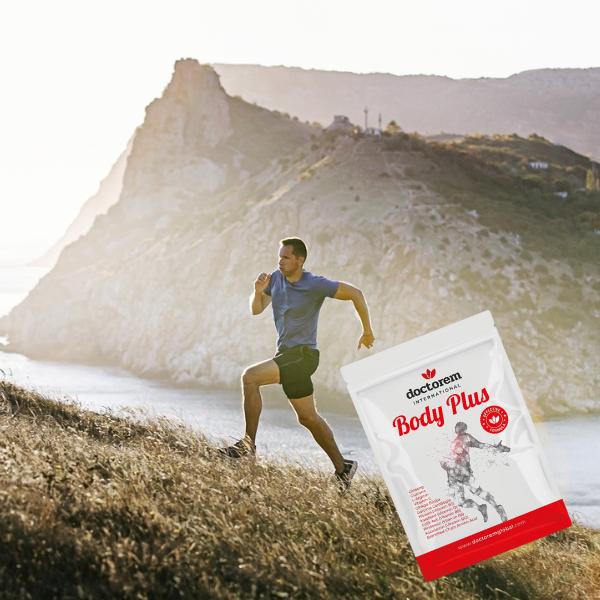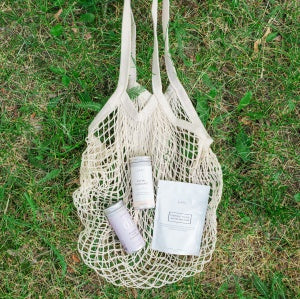فرسان نهاية العالم البيئية
يعتاد الإنسان على الخير بسرعة، هذه حقيقة. مع مرور الوقت، دخلت العديد من الأشياء والإجراءات والعمليات حياتنا، والتي بدونها نكون بلا أيدي. بدونها، نشعر بالعجز ونركض فورًا إلى المتجر. ولكن هل هو صديق للبيئة؟ لنلقِ نظرة على بعض الأمثلة البسيطة!1. أعواد قطنية للاستخدام مرة واحدة
أعواد القطن عملية للغاية. ولكن للأسف، لهذا السبب يتخلص سكان الأرض من حوالي 1.5 مليار عود قطن سنويًا. وبسبب استخدامها لمرة واحدة، قد لا تتجاوز دورة حياتها 5-10 دقائق، قبل أن تتخلص منها.
بمجرد وصولها إلى مكب النفايات، يبدأ البولي بروبيلين، الذي تُصنع منه العصا نفسها، بالتحلل إلى جزيئات بلاستيكية دقيقة (كرات يصل قطرها إلى 5 مم). ثم تنتقل إلى المياه الجوفية وإلى معدة الأسماك، التي تبتلعها تمامًا مثل الماء أو الطعام. وفي النهاية، تصل إلى معدتنا مع هذه السمكة نفسها.
اتضح أننا نأكل أعواد القطن؟
في الواقع، بدأت الحرب على أعواد القطن. في عام ٢٠١٩، حظرت وزارة البيئة والغذاء والشؤون الريفية البريطانية بيع وإنتاج أعواد القطن، نظرًا لقصر عمرها الافتراضي وعدم ملاءمتها للبيئة!

2. منتجات التجميل ذات التركيبة غير البيئية
نحن نعلم بالفعل أن المنتجات غير الطبيعية يمكن أن تكون ضارة لبشرتنا. لكن في الوقت نفسه، فإن مثل هذه المنتجات (وخاصة تلك التي تغسلها في البالوعة) ضارة أيضًا بالبيئة.
زيت محب للماء. يمكن غسل الزيت المحب للماء نفسه، إذا كان يتمتع بتركيبة طبيعية وعالية الجودة، في الحوض. لكن المكونات الضارة بمياه الصرف الصحي غالبًا ما تُضاف إلى الكائنات المحبة للماء. على سبيل المثال، الزيوت المعدنية والمستحلبات العدوانية.
الزيت المعدني هو منتج ثانوي لتكرير النفط، وهو في الأساس البترول المكرر. لا تعليق هنا - لا ينبغي غسل هذا الزيت في الحوض. في التركيبة، ابحث عن الكلمات: الزيت المعدني، الفازلين، البارافين السائل، البارافين السائل. إذا رأيت مكونات PEG وPPG والأسماء التي تنتهي بـ -eth (على سبيل المثال، Ceteareth-33) في القائمة، فلا يجب عليك غسل الزيت في الحوض أيضًا - فهو يلوث مياه الصرف الصحي.
كريمات إزالة الشعر. غالبًا ما تحتوي كريمات إزالة الشعر على مكونات تُلوّث المياه. على سبيل المثال، تلك التي تحدثنا عنها بالفعل: الزيت المعدني وPEG.
صبغة الشعر. هناك دائمًا صبغات كيميائية في الطلاء غير الطبيعي. وبطبيعة الحال، فإنها تضر بمياه الصرف الصحي. أخطرها هي الأمينات العطرية والمواد المسرطنة. تتراكم في البيئة.
أفضل شيء يمكنك فعله في هذه الحالة هو دراسة التراكيب.
3. مزيلات العرق الرذاذ
لقد دخل مزيل العرق الرذاذ بقوة في حياة الناس المعاصرين. وفي كثير من النواحي، تم تسهيل ذلك من خلال الإعلان. نعم، وفي حد ذاته سهولة التطبيق.
لسوء الحظ، تطلق بعض مزيلات العرق مركبات عضوية متطايرة (تعرف أيضًا باسم المركبات العضوية المتطايرة أو المركبات العضوية المتطايرة). ومن هذه الجزيئات يتشكل الضباب الدخاني الحضري. وكذلك الغازات الدافعة التي تسبب تغيرات سلبية في المناخ وتساهم في تلوث الهواء.
4. منتجات التجميل التي تستخدم لمرة واحدة
وينطبق هذا أيضًا على الأقنعة ولصقات الهيدروجيل لمنطقة حول العينين.
هناك تعليق واحد فقط هنا - إلى جانب حقيقة أن المواد نفسها التي تصنع منها هذه المنتجات لا تتحلل بشكل جيد في البيئة، فإنها تترك الكثير من العبوات ذات دورة حياة قصيرة. وهو ما يشكل بالطبع ضربة قوية للنظام البيئي.

ماذا حدث بعد ذلك
الآن أصبح هناك العديد من البدائل للأشياء التي يمكن التخلص منها وغير صديقة للبيئة. في أي متجر صديق للبيئة يمكنك أن تجد فرشاة أسنان خشبية، وكوب قهوة قابل لإعادة الاستخدام، وحتى جميع العصي والأقراص التجميلية نفسها. وفي أسواق التجميل، يمكنك بسهولة العثور على مستحضرات التجميل في عبوات قابلة لإعادة التدوير وبتركيبة جيدة.
لذا، لنبدأ بتكوين عادات بيئية الآن! جمعنا لكم أدناه أفضل العادات التي يمكنكم ممارستها بالفعل، ونحن على ثقة بذلك :)
1. شراء المنتجات القابلة لإعادة الاستخدام
وينطبق هذا بشكل خاص على أعواد القطن والأقراص. بالنسبة للخيار الأول، هناك بديلان رائعان - أعواد القطن المصنوعة من الخيزران وأعواد القطن القابلة لإعادة الاستخدام. توجد قابلة لإعادة الاستخدام لتنظيف الأذن والتجميل.
يمكنك العثور على كليهما في أي متجر صديق للبيئة.
خيار صديق للبيئة لأقراص مستحضرات التجميل التي تستخدم لمرة واحدة - قماش الفانيلا القابل لإعادة الاستخدام. أو مناديل الشاش. كلتا المادتين لطيفتان جدًا على البشرة، ومن السهل شطفهما بالماء.
2. انتبه للمنتجات الموجودة في حاويات قابلة لإعادة التدوير
احسب عدد الجرار الموجودة على طاولتك الآن - ستة، ثمانية، أكثر؟
يوما ما، سوف ينفد رصيدهم المالي. والسؤال الذي يطرح نفسه على الفور هو: هل من الممكن إعادة تدوير الجرة المتبقية؟ هل من السهل تفكيكها وغسلها؟
لكي لا تعاني في كل مرة، اختر المنتجات في أبسط عبواتها وأكثرها قابلية لإعادة التدوير. جميع حاويات منتجات SmoRodina مصنوعة من الورق المقوى والألمنيوم والزجاج. لا يمتص الألومنيوم والزجاج الروائح أو الألوان ويسهل إعادة استخدامها. والشيء نفسه ينطبق على إعادة التدوير.
وإذا وجدت مثل هذه الأداة، ولكنك قلق بشأن إعادة تدوير الموزع، فلا تتردد في أخذه غير مجمع إلى مركز Collector Eco-center - حيث سيقومون بإعادة تدويره بشكل صحيح هناك.

3. الشراء دون اتصال بالإنترنت
قد يزعم المنتقدون أن الذهاب إلى المركز التجاري يشجع على إهدار كميات هائلة من الكهرباء والموارد الطبيعية الأخرى اللازمة للحفاظ عليه.
لسوء الحظ، الآن يمكنك شراء كل ما تحتاجه بهذه الطريقة فقط. ولكن يمكنك تقليل بصمتك الكربونية عن طريق عدم الشحن!
إن إحدى الرحلات إلى مركز التسوق هي عدم انبعاث ثاني أكسيد الكربون من البريد السريع الذي يسارع بالتسليم بالسيارة، وعدة أمتار من التغليف البلاستيكي، وشريط لاصق.
ثلاثة إلى خمسة أموال يمكنك وضعها بسهولة في محفظتك بعد الذهاب إلى مركز التسوق، لا تستحق التكلفة، صدقني;)
4. شراء الأموال التي تحتاجها
كيف تعرف ما تحتاجه حقًا؟ أولاً، عليك أن تتوقف مؤقتًا عن الإعلانات ونصائح المدونين والأصدقاء. وهذا أمر مهم، حيث أن النصائح تأتي من أشخاص سبق لهم تجربة هذه المنتجات، مع كل خصائص بشرتهم. لذا، ليس الحقيقة أنها سوف تناسبك.
تم تصميم الإعلان ببساطة لبيعك جرة جميلة جديدة أخرى.
إذا لم تكن على دراية كبيرة ببشرتك، ولا تعرف نوعها وحالتها، وتحاول إخفاء المظاهر الخارجية فقط (الاحمرار، الالتهاب)، فمن المرجح أن النصائح الخارجية لن تكون مفيدة لك.
ولكن سيكون من المفيد جدًا زيارة طبيب الأمراض الجلدية. سيخبرك المتخصص ما هي المكونات التي يجب البحث عنها في الوسائل، والتي يجب تجنبها.
القليل عن كمية المكياج التي تحتاجها حقًا
إذا كنت تعرف نوع بشرتك وحالتها، ننصحك بإلقاء نظرة فاحصة على نظام العناية البسيط من SmoRodina: التنظيف - التونر - المصل (العناية الأساسية) - الكريم (العناية الأساسية) - العناية الإضافية (الأقنعة).
باتباع هذا النظام، سوف تشتري أموالاً أقل بكثير. ولكن جميعها ستكون فعالة حقًا!
-
يعتبر التنظيف الخطوة الأكثر أهمية في العناية بالبشرة؛ يقوم المنظف بتهدئة البشرة، ويزيل بلطف خليط الدهون والغبار المتراكم خلال اليوم؛
-
التونر - تساعد المرحلة على تنشيط البشرة قليلاً، وتحضيرها لمنتجات العناية الأساسية؛
-
إن الرعاية الأساسية (المصل) هي في الواقع المرحلة الرئيسية في نظام الرعاية بأكمله؛ يتميز هذا المركز بتأثيره الرئيسي على البشرة، حيث يستجيب لاحتياجاتها الأساسية؛
-
العناية الأساسية (الكريم) - لا يعمل الكريم على تثبيت عمل المصل فحسب، بل يغلقه أيضًا (يتبخر المصل القائم على الماء تدريجيًا من الجلد، ويترك الحد الأدنى من المكونات المفيدة)، مع الاحتفاظ بجميع الفوائد في الجلد؛
- تعتبر الرعاية الإضافية (الأقنعة) مرحلة مفضلة من الرعاية بعد يوم عمل شاق، أو خلال عطلات نهاية الأسبوع أو العطلات. تعمل الأقنعة على تدليل البشرة، وإعطائها أقصى فائدة، وجعلها مشرقة، والوجه مرتاحًا.


